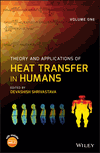Lumped Parameter Modeling of Human Respiratory System
Summary
Mathematical models can be lumped or distributed parameter representations of a system. In both the lumped and distributed parameter modeling, the system isdivided into independent compartments or lumps and each individual part of a section of a model is called a component/parameter. This chapter describes the process of lumped parameter modeling by using an example of respiratory system. The developed lumped model is shown to aid in identifying pulmonary abnormalities quickly (within minutes of onset), noninvasively and with a minimum physiological monitoring (only airway pressure and flow) that is readily available in ICUs and ORs. The respiratory system properties are related to the forces (viscous, elastic, and inertial) that develop in the system. To determine which one of the candidate models presented in the chapter is a best approximation of the respiratory system, the chapter explores the distribution of the mechanical properties in 24 generations of the respiratory system.



